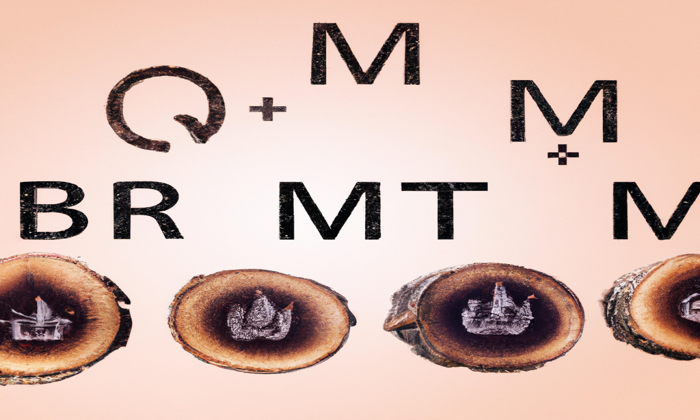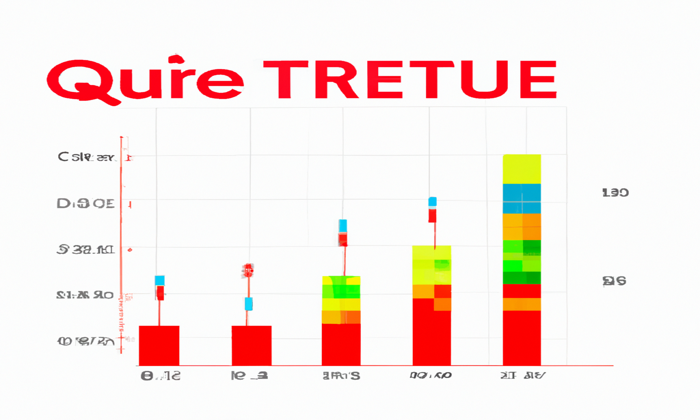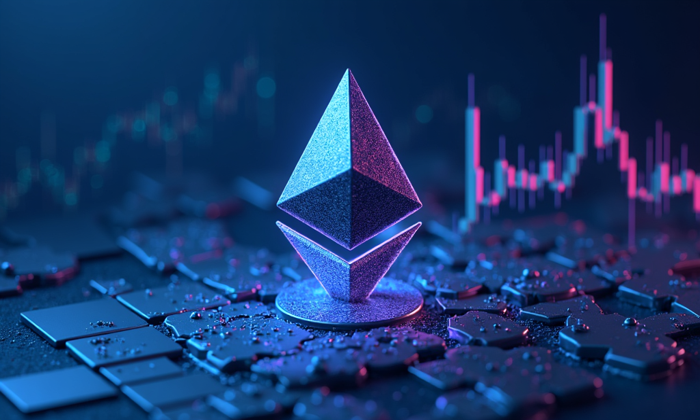The MANTRA token burn is a significant development within the DeFi protocol, as it involves the strategic burning of 150 million OM tokens from team and core contributor allocations. This token burn initiative is intended to rebuild trust in the community, particularly following a drastic value drop of over 90% in mid-April. As part of this process, the unstaking of these OM tokens is currently underway and will conclude on April 29, after which they will be permanently removed from circulation. By reducing the overall circulating supply from 1.82 billion OM to 1.67 billion OM, this crypto burn is set to enhance the economic framework of the platform, while also potentially increasing staking rewards for users. With informed participation from the CEO and ongoing discussions about additional burns, the MANTRA ecosystem is keen to engage its community in this transformative effort.
In the realm of decentralized finance, the recent burning of OM tokens by the MANTRA project marks a pivotal moment for stakeholders. This endeavor, often referred to in the cryptosphere as a token burn project, aims to minimize supply and enhance the value proposition of staked assets. As the community navigates challenges following substantial price fluctuations, initiatives like these can fortify investor faith and stimulate ecosystem growth. Moreover, the strategic removal of tokens serves to elevate the attractive yields from staking activities while signaling the project’s commitment to long-term sustainability. Overall, such actions are essential in fostering a robust and dynamic DeFi landscape.
Understanding the MANTRA Token Burn Initiative
The MANTRA token burn initiative marks a pivotal moment for the DeFi protocol, establishing a strategic approach to enhance its economic sustainability. By initiating the burn of 150 million OM tokens, the team aims to eliminate excess supply and bolster community confidence. This decision is particularly significant following the drastic 90% drop in the token’s value earlier this month. The process, which involves sending tokens to a dedicated burn address, reflects a commitment to transparency and accountability within the ecosystem.
In the larger context of decentralized finance (DeFi), token burn strategies have gained traction as an effective mechanism for managing inflation and improving price stability. By decreasing the total supply, MANTRA not only aims to stabilize its current market position but also encourages investors to engage with the protocol through staking and other avenues. Such initiatives often lead to increased scarcity, which can uplift the perceived value of tokens over time.
The Impact of Token Supply Reduction on Staking Rewards
With the reduction of OM tokens from 571.8 million to 421.8 million, the bonded ratio will significantly lower from 31.47% to 25.30%. This change is expected to have a positive impact on staking rewards, as participants will experience a comparatively higher yield due to the diminished supply of staked tokens. A lower bonded ratio can lead to increased rewards per staked token, making staking more attractive for current and potential investors.
The mechanism of decreasing token supply to enhance staking rewards exemplifies a fundamental principle of crypto economics: incentives drive user participation. By lowering the amount of tokens in circulation, MANTRA not only seeks to reward its stakers more generously but also to create a more appealing platform for new entrants. As the ecosystem evolves, the anticipated rise in staking rewards could cultivate a more robust community engagement, further strengthening the MANTRA network.
CEO John Patrick Mullin’s Commitment to Token Burn
John Patrick Mullin, the visionary CEO and Founder of MANTRA, has taken a significant step by committing to burn his entire allocation of 150 million OM tokens. His decision not only reinforces the company’s commitment to transparency but also aligns with the objectives of the token burn initiative. This act sets a powerful example for the community, showcasing that leadership within the DeFi protocol is directly invested in the project’s long-term viability.
Mullin’s proactive involvement in the burn initiative can catalyze further discussions about community trust and collaborative governance. As stakeholders watch the burn process unfold, Mullin’s actions may inspire other team members and community contributors to follow suit, thereby further solidifying the economic foundations of the MANTRA protocol. This collaborative spirit within the DeFi space is essential as it helps cultivate investor confidence and enhances the overall ecosystem.
Future Plans for Additional Token Burns
Looking forward, MANTRA is not resting on its laurels with the initial burn of 150 million OM tokens. The team is actively engaging with ecosystem partners to explore opportunities for an additional burn of 150 million OM, potentially doubling the total amount removed from circulation to 300 million tokens. Such collective efforts not only underline MANTRA’s strategic adaptability but also highlight the importance of community collaboration in sustaining the platform’s health.
The proposed additional burn could have a compounding effect on the token’s perceived value, making MANTRA a formidable player in the DeFi landscape. By focusing on strategic burns, the team aims to create a more resilient economic structure that benefits all stakeholders. This approach aligns with broader trends observed across the DeFi sector, where token burns are employed by various protocols as a method to generate hype, increase market stability, and ultimately drive user participation.
Tracking the Progress of the Token Burn on Blockchain
As transparency is a cornerstone of decentralized finance, MANTRA has pledged to provide full verification of the token burn process through on-chain tracking. Participants can monitor the burn’s progress via provided transaction hashes, ensuring that the process is open to public scrutiny. This level of transparency not only builds credibility for MANTRA but also encourages community engagement and trust between the platform and its users.
Blockchain technology enables a novel way to track such initiatives, making the verification of the token burn process accessible to everyone involved. This commitment to transparency demonstrates MANTRA’s dedication to fostering an informed and engaged community. By allowing users to directly observe the impact of the token burn on the supply dynamics, MANTRA sets a new standard in the DeFi landscape for stakeholder involvement and accountability.
The Role of Token Burn in DeFi Ecosystems
The concept of token burn is not just a trend in the crypto industry; rather, it plays a crucial role in managing the intricacies of DeFi ecosystems. By systematically removing tokens from circulation, projects like MANTRA can create a more compelling value proposition for both investors and users. This approach mitigates inflation, enhancing the economic model that underpins the ecosystem while engaging community stakeholders in meaningful ways.
In today’s competitive DeFi landscape, where numerous protocols vie for user attention, implementing effective token burn strategies can set a project apart. By reducing supply while maintaining or increasing demand, DeFi protocols can generate positive price momentum, encouraging further investment and participation. Consequently, token burns are an essential tool for ensuring that projects remain attractive and competitive in the ever-evolving crypto market.
The Link Between Token Burn and Market Performance
Historically, projects that have effectively executed token burns often witness a correlation between such initiatives and improved market performance. For the MANTRA protocol, the decision to burn a substantial portion of its OM tokens is poised to influence investor sentiment positively and create a more bullish outlook on its future. This strategic move can reinforce belief in the project’s underlying technology and long-term vision.
In addition to potential price increases, the token burn can also impact liquidity dynamics, as reduced supply often leads to heightened scarcity. Investors generally respond favorably to deflationary measures, viewing them as a commitment to restoring value and stability. Ultimately, the success of MANTRA’s token burn initiative will depend on how the broader community reacts and aligns with the project’s future objectives.
Managing Community Trust Through Token Economic Strategies
In the volatile world of cryptocurrencies, managing community trust is essential for the success of any protocol, including DeFi projects like MANTRA. The introduction of the token burn initiative serves as a proactive measure to regain investor confidence after the recent market downturn. By transparently communicating their plans and executing strategic burns, the team signals its commitment to maintaining a healthy ecosystem and safeguarding investor interests.
Trust management in the crypto space often hinges on effective communication and demonstrable actions. MANTRA’s approach to token economics, specifically through the planned burns, aims to recalibrate the community’s perception and instill a sense of reliability. By fostering an environment where community members feel invested in the protocol’s direction, MANTRA can promote engagement and collaboration within its ecosystem.
Encouraging Participation with Innovative Tokenomics
The innovative tokenomics employed by MANTRA, particularly the token burn initiative, are designed to encourage greater participation from users and investors alike. By offering enhanced staking rewards tied to a decreased supply of OM tokens, the project cultivates an attractive environment for both new and existing community members. Through thoughtful tokenomics, MANTRA can incentivize behaviors that align with its long-term vision while promoting network security.
Furthermore, the structure of MANTRA’s token economy, which includes provisions for staking, rewards, and burns, fosters ongoing engagement. Participants are not only motivated by potential rewards but also by a sense of ownership in the outcomes of the project. As the ecosystem evolves, user-driven initiatives paired with effective token manipulation will be pivotal in shaping the future trajectory of the MANTRA protocol.
Frequently Asked Questions
What is the MANTRA token burn initiative?
The MANTRA token burn initiative involves the burning of 150 million OM tokens from the team’s allocation to enhance the economic structure of the DeFi protocol. This initiative also aims to restore community trust following a significant drop in token value.
How does the MANTRA token burn affect staking rewards?
The MANTRA token burn will reduce the total token supply, resulting in a decrease in the bonded ratio from 31.47% to 25.30%. This change is expected to improve on-chain staking rewards for OM token holders.
When will the OM tokens be burned after the unstaking process?
The unstaking of the 150 million OM tokens is expected to be completed by April 29. Once completed, the tokens will be sent to a designated burn address and permanently removed from circulation.
What was the impact of the recent drop in MANTRA’s token value?
In mid-April, MANTRA’s token value dropped by over 90% within 24 hours. In response, the MANTRA token burn initiative was launched to boost community confidence and stabilize the DeFi protocol’s economic framework.
Who is leading the burning of OM tokens in the MANTRA protocol?
CEO and Founder John Patrick Mullin is leading the initiative by burning his entire allocation of 150 million OM tokens, aligning with the broader MANTRA token burn initiative to enhance the platform’s economics.
How can I track the MANTRA token burn on-chain?
You can track the MANTRA token burn on-chain through the transaction hashes provided byMANTRA. Once the burn process is completed, full verification details will be made publicly accessible.
Will there be additional OM token burns beyond the initial 150 million?
Yes, MANTRA is in discussions with ecosystem partners to potentially organize an additional burn of another 150 million OM tokens, which would double the total tokens burned to 300 million OM.
What effect does token burning have on the overall OM token supply?
The token burning will reduce MANTRA’s total token supply from 1.82 billion OM to 1.67 billion OM, helping to stabilize the token’s value and encourage a healthier economic environment in the DeFi protocol.
What are OM tokens used for in the MANTRA protocol?
OM tokens are used primarily for staking within the MANTRA DeFi protocol, supporting network security and enabling participants to earn staking rewards through the platform.
What is the bonded ratio and how does the burn impact it?
The bonded ratio represents the percentage of staked tokens in relation to the total supply. With the token burn, the bonded ratio will decrease from 31.47% to 25.30%, which is anticipated to enhance on-chain staking rewards.
| Key Points | |||||||||||
|---|---|---|---|---|---|---|---|---|---|---|---|
| MANTRA has initiated a burn of 150 million OM tokens from its team and contributors allocation. | The unstaking process is expected to complete by April 29. | Tokens will be sent to a burn address and permanently removed from circulation. | The initiative aims to restore community trust after a 90% value drop in mid-April. | Total supply will decrease from 1.82 billion OM to 1.67 billion OM. | Staked tokens will reduce from 571.8 million to 421.8 million OM. | The bonded ratio will drop from 31.47% to 25.30%. | This reduction is expected to increase on-chain staking rewards. | CEO John Patrick Mullin is burning his entire allocation of 150 million OM. | Discussions are ongoing for an additional burn of 150 million OM with partners. | Total burned could reach 300 million OM if the second burn is successful. | Burn verification will be publicly available after completion. |
Summary
The MANTRA token burn marks a significant initiative to enhance trust within the community and reinforce the economic balance of the platform. By permanently removing 150 million OM tokens from circulation, MANTRA aims to recover from a major value drop while simultaneously improving the incentive structure for token holders through increased staking rewards. As discussions continue for a second burn, the total tokens removed could reach 300 million, further solidifying the commitment to a stronger, more resilient network.
The recent MANTRA token burn marks a pivotal moment for the DeFi protocol, as it embarks on an ambitious initiative to burn 150 million OM tokens from its team and core contributor allocation. This strategic token burn aims not only to restore community trust but also to enhance the economic stability of the MANTRA platform, which has suffered a staggering decline in value. The process, which involves unstaking tokens and subsequently sending them to a designated burn address, is projected to conclude by April 29. By reducing the total token supply from 1.82 billion OM to 1.67 billion, this initiative will optimize the bonded ratio and potentially lead to increased staking rewards for the community. It’s a significant move in the crypto burn narrative that highlights MANTRA’s commitment to its stakeholders and the future of its ecosystem.
In the world of decentralized finance, the concept of a token burn refers to the intentional reduction of the total token supply to bolster value and confidence in a crypto asset. The MANTRA project has announced its own burn initiative, focusing on the removal of millions of OM tokens to recalibrate its network economics following a recent market downturn. This action not only impacts the total supply but also influences the proportion of staked tokens, thereby affecting the overall staking rewards available to participants. Such measures resonate within the broader landscape of crypto economies, where strategic burns can lead to rejuvenated interest and investment. As MANTRA takes these crucial steps, discussions with ecosystem partners for additional burn opportunities are set to further amplify its efforts towards a robust recovery.














